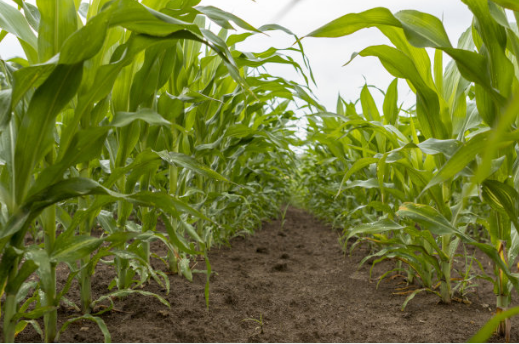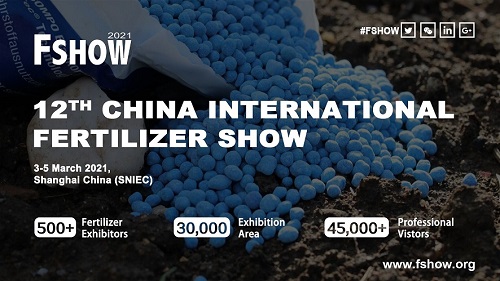
Exhibition time: 17-19 March, 2026 Shanghai, China
 中文
中文

Exhibition time: 17-19 March, 2026 Shanghai, China
 中文
中文

Societal Impact Statement
Fertilizer nutrients are essential for food and nutrition security, but a large proportion of nutrients applied to soil are lost because they are unavailable to plants. The extent of these nutrient losses exceeds safe and sustainable limits. Societal awareness of this is limited because it can take many seasons for nutrient-loss impacts to become visible. We propose that Innovative Fertilizers and Application Technologies (IFAT) could help reduce nutrient losses and thus reduce pressure on resources, and provide important micronutrients for human health. However, transformation of the fertilizer sector through stakeholder engagement, policy interventions, and public–private initiatives will be required to unlock the full potential of IFAT.
Summary
Strategies for delivering sustainable food systems require significant reduction in yield gaps and food system inefficiencies. Mineral fertilizers will play a critical role in achieving both of these aims. However, reduction in nutrient losses from mineral fertilizer use to levels that are considered sustainable has not been achieved and has been estimated to be unachievable, even with optimized practices for current products. We argue that Innovative Fertilizers and Application Technologies (IFAT) are needed to address the daunting and interlinked food, agricultural, and environmental challenges facing humanity and the planet. We define IFAT as a set of fertilizer products and technologies that are designed by taking the physiological needs of plants (such as nutrient uptake, redistribution, and utilization) as the entry point in the fertilizer development process, rather than starting first with chemistry. This approach aims for the timely and targeted delivery of nutrients in balanced quantities. We propose that this can result in multiple food, agricultural, and environmental benefits, including increased yield, improvements in nutritional quality, enhanced crop resilience, and reduced emission of greenhouse gases (GHG), and leaching losses. However, the benefits of IFAT for human and environmental health have remained elusive. The major challenge for optimal use of IFAT is a transformation of the vast fertilizer sector by means of government policy interventions, societal responses, and significant investment in public and private research and development.
Key Words
fertilizer sector, human nutrition, innovative fertilizers, nanotechnology, plant health
1 | INTRODUCTION
Global hunger and malnutrition are epidemic intergenerational phenomena affecting billions of people. Among our greatest challenges is resolving this dire situation within the limits of our planetary boundaries. A recent publication by The EAT-Lancet Commission on Food, Planet, Health presents an alarming scenario of human and planetary health and calls for a Great Food Transformation: a significant change to a low meat plant– based diet and sustainable agricultural intensification are proposed as a means to contain environmental impacts within the limits of our planetary boundaries.

Mineral nitrogen (N) and phosphorus (P) fertilizers are essential for food production and are among the major drivers of global change. Decades of breeding for high-yielding crop varieties that respond to intensive N, P, and K (potassium) fertilization have increased crop yields. Higher yields have limited the need to expand the amount of arable land and have helped spare pristine ecosystems from being converted into land used for agriculture. However, nutrients not taken up by plants from the fertilizers are lost as ammonia and nitrous oxide to the air and as nitrate or phosphate to water bodies contribute to climate change, eutrophication, and biodiversity decline in coastal zones. To reduce nutrient losses, the fertilizer industry proposed the 4R nutrient stewardship (right source, rate, time, and place; IPNI, 2012). However, fertilizer use efficiencies remain low, at about 40% worldwide, ranging from less than 30% up to 70%. Reformulation of bulk NPK fertilizers with coatings and encapsulations and the use of inhibitors have been demonstrated to slow nutrient release or prevent nutrient transformation, in the case of N from urea to ammonium and to nitrate, to control losses. However, the efficacy of fertilizers reformulated in this way remains unclear. Moreover, polymer and bacterial coatings pollute the environment. The specialized fertilizer markets of coatings and inhibitors, and of fertilizer products that contain secondary and/ or micronutrients, such as calcium (Ca), magnesium (Mg), sulfur (S), zinc (Zn), iron (Fe), copper (Cu), manganese (Mn), and boron (B), primarily serve high value crops in advanced production systems, while approximately 95% of the market caters solely N, P, and/or K. Decades of policy measures to limit nutrient losses. Indeed, these nutrient losses are likely to exceed the planetary boundaries even with optimized agronomy combined with nutrient recycling, global redistribution (e.g., using less fertilizer in high-income nations and using more in low-income nations), and dietary measures (e.g., consuming more plant-based diets).
Decades of continuous cropping of improved crop varieties using only NPK fertilizers has risked the depletion of soil micronutrients that are essential for plant growth, as reported in India. Jones et al. (2013) reported a consistent reduction in soil Cu, Zn, and Mn content over the past four decades in the relatively young soils of England, UK. These researchers also noted how the recommendation to treat only visible micronutrient deficiency symptoms results in the build-up of ‘hidden or subclinical deficiencies’ that may be limiting crop yields or livestock health, even without visible symptoms occurring. Therefore, yield increases along with reducing micronutrients through breeding and chronic micronutrient undersupply of crops have reduced the levels of secondary and micronutrients found in crops. For example, the levels of nutrients Ca, Mg, Zn, Fe, and Cu found in cereals, fruits, and vegetables have decreased, sometimes by more than half, which in turn impacts human nutrition.

This current article explores Innovative Fertilizer products and Application Technologies (IFAT); defined as a set of fertilizer products and technologies that are designed by considering the physiological needs of plants, such as nutrient uptake, redistribution, and utilization, rather than chemistry as a starting point in the fertilizer development process. The aim of this is to ensure the timely and targeted delivery of nutrients in balanced quantities. A better synchrony between plants and fertilizer–nutrients ensures that IFAT encompasses the reduction in nutrient inefficiencies and losses; however, IFAT goes beyond nutrient management. It redefines the concept of fertilizer by advancing balanced-nutrient fertilization as an integrated system that responds to specific plant physiological challenges, individually or simultaneously. In theory, we conceive IFAT to provide multiple benefits. Thus, in addition to improving production (yields) and reducing the negative environmental footprint of fertilizers, the IFAT approach is designed to improve both the nutritional quality of edible agricultural produce and plant tolerance to both biotic and abiotic stresses. These responses are due to the enhancement of total uptake by plants of the multiple nutrients in balanced fertilizers. Taken together, these responses can result in numerous food, agricultural and environmental benefits, including enhanced crop resilience to challenging environments, facilitated plant phenological development, increased yield and human/ animal nutritional quality, and reduced greenhouse gases (GHG) emissions, leaching losses and eutrophication.
2 | INNOVATIVE FERTILIZERS AND APPLICATION TECHNOLOGIES
Biological fixation of atmospheric nitrogen and soil weathering supplies plants with essential nutrients for their growth and reproduction. In addition, green manuring or cover cropping, and introduction of composted biomaterials contribute nutrients as well. However, these natural processes are insufficient to meet the global demands of food production without significant expansion of the amount of land devoted to the cultivation of crops. The majority of commercial fertilizers have been optimized for largescale physicochemical processing, ease of logistics, and soil application for bulk NPK products. This creates a mismatch between the intended function of fertilizers for optimizing plant nutrition and their actual effectiveness. Combined with improved understanding of nutrient requirements, detection of nutrient deficiencies, and 4R nutrient stewardship, IFAT has the potential to improve the high inefficiencies associated with nutrient use by plants from current fertilizers. However, despite the low efficacy and environmental problems associated with the majority of fertilizer use, private sector investments in fertilizer R&D is ≈0.2% of total product value, which compares poorly with the over 10% R&D investment seen in the seed and life sciences sectors. Several drivers maintain the status quo of the industry, such as a secured growth in the fertilizer market due to increasing demand for food, market concentration, geographically concentrated production, and recovery of high sunken costs in mining and production facilities. Importantly, nutrient losses are dispersed over land, water, and air, with a long lag time to reveal the adverse environmental impact. This causes a lack of societal awareness that is necessary to demand for change.

To address the mismatch between nutrient supply in fertilizer products and plant requirements, Bindraban et al. (2015) called for a paradigm shift in fertilizer design and delivery to plants by taking contemporary understanding of the plant physiological processes underlying nutrient uptake, redistribution, and utilization as a starting point rather than looking first at the chemistry. Similar ‘‘frontend’’ bio-based strategies for fertilizer design and delivery have also been discussed by Monreal et al., (2015). Indeed, on-going work by these researchers describe a root exudate-activated system for N delivery, the design of which is based on specific plant root exudates that serve as temporal signals for the plants need for N. Figure 1 depicts the proposed reversal of the fertilizer design and development process. Fine-, bio-, and nanochemistry and advanced materials must be central to developing novel fertilizer products that supply balanced amounts of nutrients with temporal and spatial specificity to optimize plant utilization. Thoughtful formulations of multiple micronutrients can effectively increase both crop yield and nutrient content by exploiting synergism among nutrients. Novel fertilizer products and application technologies should also focus on nutrient uptake via above-ground organs, including leaves, seed dressing, and injection into the stem for crops with succulent and water-filled stems, such as bananas. These alternative application routes can reduce inefficiencies associated with leaching or volatilization, and fixation of nutrients in soil. Foliar application of micronutrients, such as Fe, Cu, Zn, and Mn, is already practiced, but their uptake can be enhanced when chelated with organic molecules, such as humic acid, or delivered as nanoparticles, for instance, with 60% higher uptake of Fe as compared with nonchelated Fe in soybean. Bacteriosiderophore chelated Fe applied to foliage resulted in enhanced grain Fe concentration by 1.7- and 2.0-fold in soybean and wheat, respectively. Nutrients can be chelated by substances that respond to biological signals, such as root exudates, rather than to physicochemical soil conditions. Depending upon the needs of the plant, such signals will trigger the release of nutrients for uptake by the crop. Soil amendments such as sorbents or beneficial microorganisms may enhance and synchronize nutrient availability to plant demand. Some micronutrients that are not essential for plants, like selenium (Se), are essential for humans and livestock, and increased contents of these micronutrients in crops benefit public health. IFAT approaches may prevent overdosing, such as by chelating or selecting the right formulations to prevent leaf burn, or coating of NPK fertilizers with micronutrients for soil application rather than bulk blending.
Source from <Fertilizer View> , to see more details, please read online or download <Fertilizer View>
